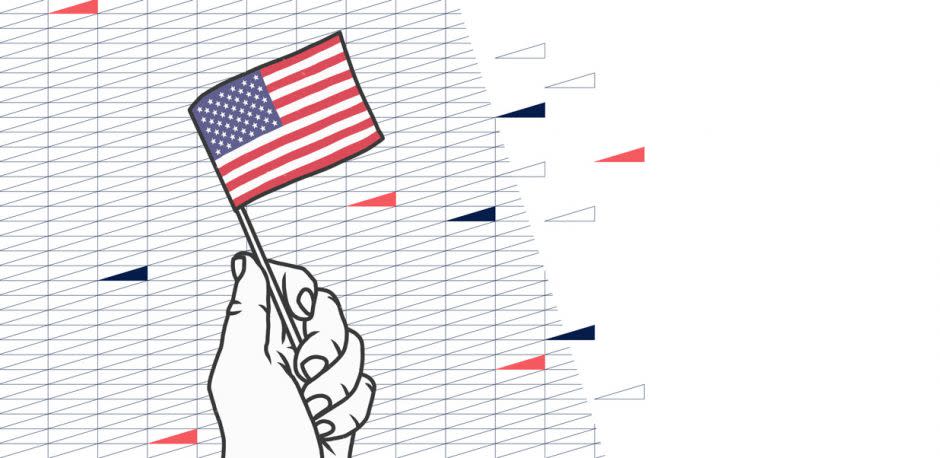After a spate of stronger than expected US economic data in recent weeks, the market’s once again expecting the Federal Reserve (Fed) to hike interest rates when they next meet on 3 May.
The Fed Funds Futures market shows there’s now a near 70% chance of another 25-basis point rate hike. This would push US interest rates to 5-5.25%, their tenth consecutive hike and highest level since 2007.
At the end of 2022, we were talking about the prospect of a Fed pivot. However, not even the collapse of Silicon Valley Bank in March and a potential crisis for medium-sized regional banks in the US has caused expectations of higher interest rates to retreat.
What has changed and what does it mean for your portfolio?
There are three compelling reasons why the Fed could continue to hike rates right now. Rising stock prices, rising wages and decent levels of growth all make it hard for the Fed to argue that now’s a good time to stop raising rates.
March inflation data showed a worrying crossover. Core CPI, or sticky inflation, is now higher than headline inflation, as you can see in the chart below. Headline inflation is 5%, while core CPI is 5.6%.
Headline inflation has fallen back as energy prices have tumbled and food prices have stabilised. However, core CPI is continuing to rise, largely due to rising shelter costs, which rose 0.7% month on month in March, airline fares and car insurance costs.
Core CPI is called sticky inflation for a reason – it tends to stick and it's very hard to bring down. So, while 2022 was all about headline inflation, 2023 will be centred on the Fed’s fight against core inflation.
US headline vs. core inflation
Source: Bloomberg, 31/03/2023.
Interestingly, the Fed hasn’t pushed back on the suggestion that rates could rise higher than currently expected.
The President of the Fed, Jerome Powell, testified to the US Congress in mid-March that interest rate hikes might have to speed up to tackle the threat of inflation. He also said that future interest rate decisions will be data dependent.
This point is important for investors because US interest rate expectations can fluctuate dramatically when economic data is released, particularly inflation, labour market and retail spending data.
This fluctuation has an impact on financial markets. In recent months, when expectations have leaned towards higher interest rates, stocks and bonds tend to fall. In contrast, whenever interest rate expectations have leaned towards lower rates, we’ve seen stocks and bonds tend to rise.
Where to invest during stock market uncertainty
Credit conditions and where interest rates might go next
Added to this, the President of the Federal Reserve Bank of New York, John Williams, recently said that credit conditions aren’t tight in the US. He also added that the collapse of Silicon Valley Bank and the stress in the US banking system wasn’t due to the Fed’s interest rate cycle, which raised some eyebrows.
While some of what Williams said about credit conditions has been disputed, for example, the latest NFIB Small Business Credit Conditions index plunged, tighter credit hasn’t been universal. Consumer loans have fallen back slightly in the first quarter of 2023. However, they’re still strong compared to the long-term average. So, credit might not be tight, but it is unevenly distributed.
Why does this matter for the Fed?
A huge amount of future economic growth relies on credit and access to loans. While it doesn’t bode well that the business community is seeing loan growth contract, consumer spending makes up just under 70% of US economic growth. So, if the consumer can keep borrowing then the US economy can continue to grow.
This leaves the Fed with a strong reason to continue to hike interest rates until we see some weakening in the consumer. And we might only see this if unemployment start to rise. For now, cash or credit rich US consumers could mean higher US interest rates for a longer period.
Shifting interest rate expectations and financial markets
It’s also worth noting that small shifts in interest rate expectations can cause large shifts in market sentiment.
In January, the market expected US interest rates to peak at 4.75-5.0%. But, the market now expects the Fed’s terminal rate to peak at 5-5.25% in May. This might not seem like a large difference, however, it can mean big changes for financial markets.
Gold is a good example. The price of gold is sensitive to rising interest rates, and so far this year it’s risen by nearly 10%. This has coincided with the shift in the Fed’s terminal rate.
On the other hand, tech has had a blistering start to the year, and the US tech stock index has risen more than 13% year to date. However, its gains have slowed down in recent weeks as the prospect of a terminal rate above 5% has been priced into the market.
This could be a problem for US stocks overall. Just 20 stocks accounted for 90% of the main US benchmark’s gains in the first three months of 2023. Tech stocks could struggle though if interest rates remain higher for longer, and it could weigh on US benchmark performance overall. That’s because tech stocks tend to be negatively impacted by rising interest rates, as they erode the value of future cash flows.
This article isn’t personal advice. If you’re not sure what’s right for you, ask for financial advice. Investments can rise and fall in value, so you could get back less than you invest. Past performance also isn’t a guarantee of future returns.
Recession risks looming?
Another side effect of rising US interest rates in 2023 could be a deeper recession.
Right now, Bloomberg’s US recession forecast tool is predicting a 65% chance of a US recession in the next quarter. This is one of the highest levels since the peak of the pandemic in 2020. If interest rate expectations rise above 5.5% or 6%, then a recession becomes even more likely.
In the event of an economic recession, investors will want to recession proof their portfolios. If this happens, defensive sectors like utilities, healthcare, and energy stocks could come back in vogue alongside bonds.
Kathleen Brooks is Founder of Minerva Analysis, a market analysis company. Hargreaves Lansdown may not share the views of the author.
3 share ideas to ride out a recession
Editor's choice: our weekly email
Important information - This article isn’t personal advice. If you’re not sure whether an investment is right for you please seek advice. If you choose to invest the value of your investment will rise and fall, so you could get back less than you put in.


